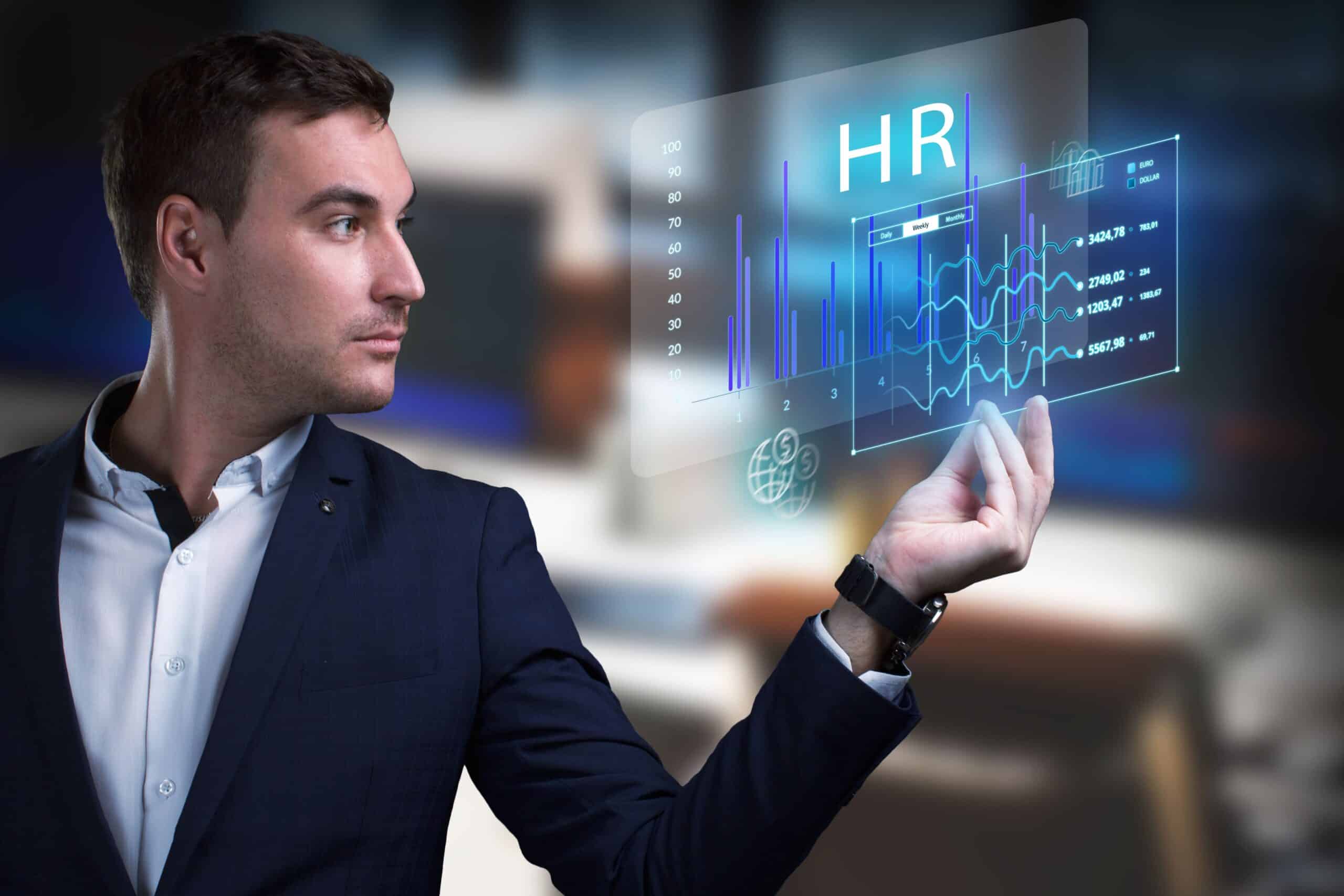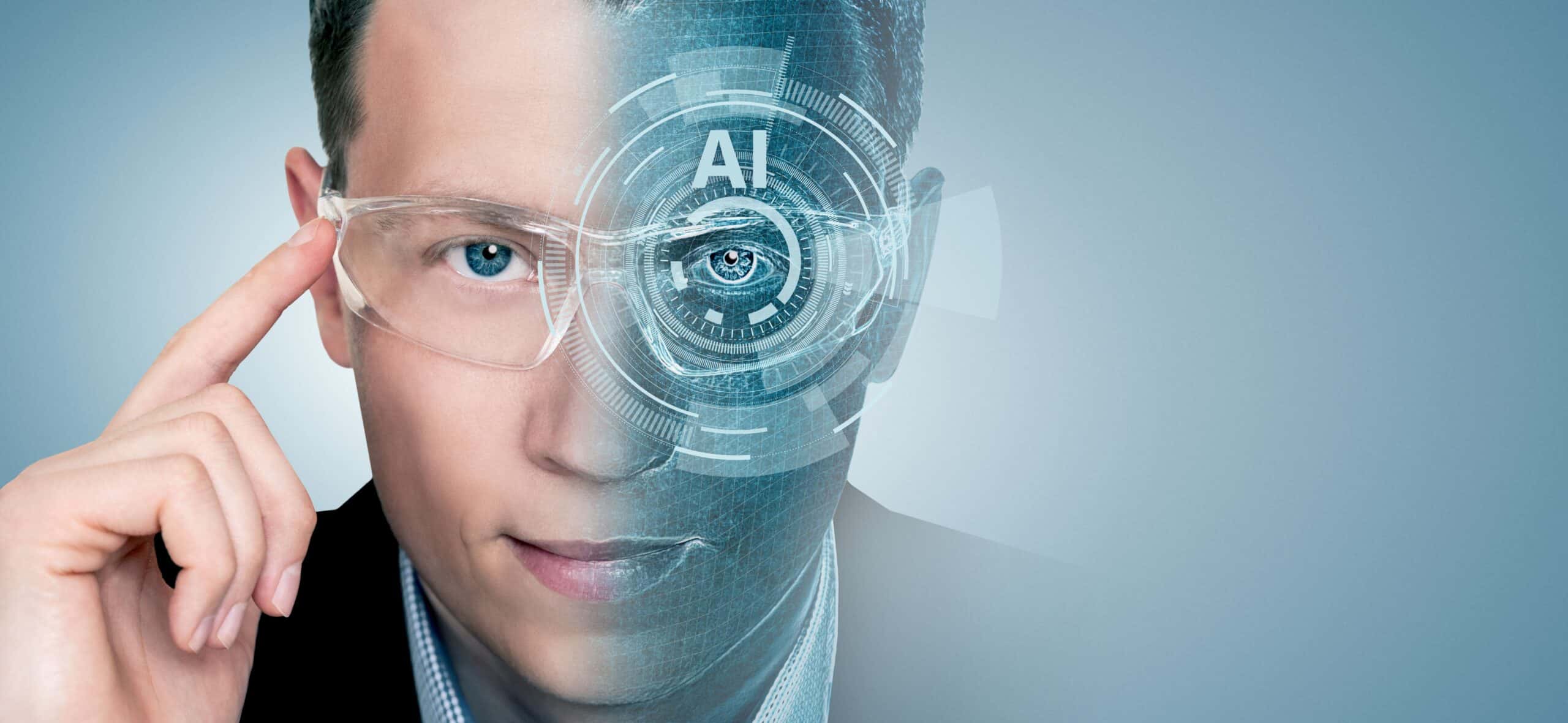If the past years have taught us anything, it’s that enterprises that don’t keep pace with the exponential changes in tech will struggle to survive. The solution can be found in carefully observing trends and collecting data to gain insight into which tech best speeds up your digital transformation – which doesn’t happen overnight, mind you. It requires the careful identification of emerging technologies that exhibit the greatest potential at providing competitive advantage.
And the rapid rate of technological advancement has initiated exciting tech trends that can reinvent entire industries, delivering a slew of cutting-edge technologies. We’ve gathered and assessed the top tech trends that can help businesses thrive as they venture into 2019.
Trend 1: Blockchain’s incredible potential becomes increasingly evident
Although it’s known as the technology behind cryptocurrencies, blockchain’s potential is much bigger than that. As a decentralised ledger of immutable transactions, it stores data on thousands of computers and doesn’t need third-party validation for transactions. Multiple sectors, such as finance, real estate, healthcare, and retail, can benefit from blockchain. This technology could, for instance, be used to create a payment system with smaller fees in international money transfers. Also, a blockchain-powered land registry system that uses smart contracts to record land sales is already being tested in India, while the government in Dubai plans to run several public services on distributed ledger technology. Businesses can rely on blockchain to raise money using an Initial Coin Offering (ICO) – a crypto-version of going public, where investors get crypto tokens instead of shares. Clearly, it’s important that enterprises find ways to leverage this tech as it will create $3.1 trillion in business value by 2030.

Trend 2: AI technology continues to deliver big things
Consumers are increasingly embracing AI-powered products and services and enjoying the benefits they bring. Machine learning (ML), a subset of artificial intelligence, is credited with delivering many of those benefits, training machines to continuously learn and make decisions by discovering insights and patterns in data with minimal human intervention. ML has been rapidly deployed across multiple sectors and the value of this market is set to grow to $8.81 billion by 2022. The applications of ML are numerous and, for instance, include the well-known self-driving Google car and the online recommendation systems of Amazon and Netflix. Artificial intelligence platforms are also expected to have a big impact on big data analytics as they can efficiently process data and deliver actionable business intelligence. In addition to this, companies are advised to pay attention to dark data – unused digital information – and analyse it to derive additional insights.
Trend 3: Virtual reality – so much more than gaming technology
Virtual reality (VR) technology has moved from the gaming industry into other sectors in recent years, finding multiple applications. From training to immersive educational experiences, there’s little VR can’t do. For instance, companies such as Osso VR and ImmersiveTouch have developed simulations that enable surgeons to train for surgical procedures using VR headsets. Combining VR with haptic feedback technology, doctors can even feel the “resistance of tissue”, providing increasingly effective training methods. VR is popular among scientists as well, and Nanome has created a program that enables users to design and manipulate molecular structures. And for those interested in exploring the universe, SpaceVR is developing “the world’s first virtual reality camera satellite” to give people a chance to experience the vastness of space. One of the key obstacles to VR becoming mainstream, however, is still the cost of the headsets, despite efforts of companies like Facebook and HTC to create cheaper models. Nevertheless, VR is promising tech with incredible potential, the scope of which is yet to be explored.
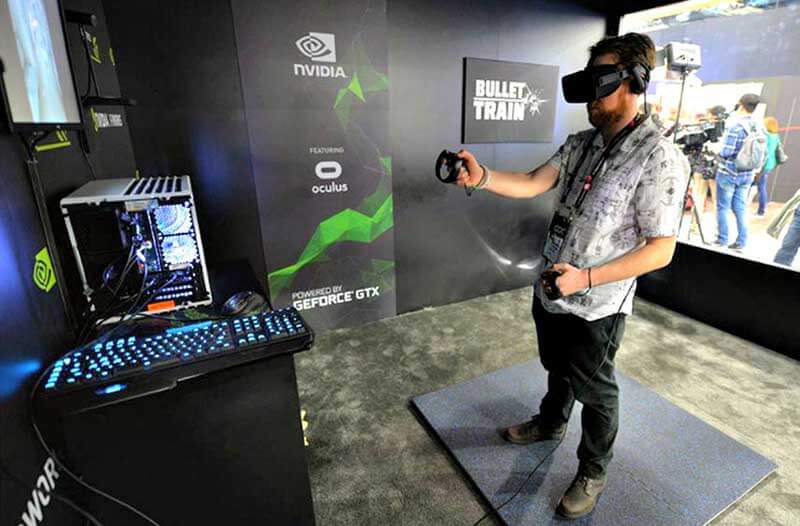
Trend 4: In the smart workspaces of the future, everything is connected and personalised
Our workplaces are evolving into smart spaces where everything is connected and personalised. This shift is happening for several reasons, such as the desire of millenials to work in efficient and environmentally-friendly offices. An example of how technology can make workplaces more efficient is Honeywell’s Vector Space Sense. This software shows “where, when and how building spaces are used at any given point in time”, enabling managers to better manage the use of space and make their workplace more efficient. Siemens is also developing a Smart Space solution that should improve workspaces in a number of ways. For instance, algorithms calculate which room is the ideal size for a proposed meeting and inform attendees on how to get there. The algorithms also ensure that lights and temperature automatically adjust to the levels preferred by employees. These and many other benefits are expected to lead to substantial energy savings and more productive employees.

Trend 5: Edge computing: a solution for processing massive amounts of data
Instead of sending data across long distances to clouds or other storage centres and potentially experiencing latency, edge computing speeds things up and processes some of that data closer to where it originated. This means that the user’s computer, a connected device, or edge servers are expected to do more of the computing through a “mesh network of micro data centers” instead of relying on clouds that are “no longer sufficient to instantaneously process” the data we generate. And edge computing will become even more critical, with more than 75 billion IoT devices expected to be in use worldwide by 2025, generating ever-increasing amounts of data. This prompted Intel and Alibaba to launch a Joint Edge Computing Platform that “integrates Intel’s software, hardware and AI technologies with Alibaba Cloud IoT products”. We can expect similar initiatives in the future as the value of the edge computing market is estimated to reach $6.72 billion by 2022.
Trend 6: Cyber-attacks are targeting new smart devices, but we can fight back
Cyber-security tools are constantly evolving to be able to protect new technologies and counteract the ever-changing nature of cyber-threats. The latest trends in this field are related to the protection of IoT devices, in which standard security like firewalls or intrusion detection systems (IDS) are no longer sufficient. Instead, network behaviour analytics based on deep learning technology is seen as a potential solution as it enables fast detection and the prevention of suspicious activities. Another proposal is to introduce virtual private networks that mask the user’s IP address as a standard security measure. Also, hardware authentication protocols and data loss prevention technologies are touted as robust protection against hackers. Finally, the growing popularity of the cloud means that this sector, too, will have to deploy strong cyber-security protection through virtualised firewalls, virtualised intrusion detection, or other tools. Overall, cyber-attacks are expected to increase significantly in 2019 and it’s important that companies as well as individuals ramp up their security measures.

Trend 7: Digital ethics – machines and morality
People are increasingly debating moral dilemmas related to technologies such as artificial intelligence (AI) and robotics. One of the well-known issues is, for instance, the trolley problem – an ethical dilemma in which the subject (in this case, a train, but in a modern-day setting it could be a self-driving vehicle) is forced to choose between staying its course and colliding with five people, or sverwing to save those, killing ‘only one’ in the process. How will self-driving systems decide on life and death matters? Who will be held responsible for the actions of AI machines? And on a macro level, there’s the ongoing debate on privacy and data protection. David Cearley, vice president of research firm Gartner, says that companies should move beyond asking “are we compliant” to “are we doing the right thing”. The European Commission is taking a stance, too, as it argues for the creation of a legal and ethical framework for the use of AI. And as digital technologies grow ever more pervasive in our lives, we can expect more discussions on digital ethics.

Trend 8: Quantum computers take computing to a whole new, high-speed level
Over the years, computers have transformed from slow, clunky boxes into super-fast, tiny devices. But even though today’s computers are more powerful than previous versions, when it comes to solving extremely complex problems, their computer power keeps falling short. This encouraged researchers and businesses to explore the potential of quantum computing. Unlike classical computers that rely on bits to process information (in the form of 1s and 0s), quantum computers use qubits that can store more information and perform more complex calculations at much greater speed. Although this technology is still in its infancy, IBM believes it could go mainstream in the near future. In fact, earlier this year, IBM introduced a quantum computing machine that consists of 50 qubits. And the race to build the world’s first quantum computer continues, with Google launching its own quantum computing system, Bristlecone, consisting of 72 qubits. For now, however, these innovations are suitable only for laboratory work and research. To make them useful in a real world setting, a lot more work needs to be done.
Trend 9: The rise and rise of fake content
Did you hear about the Obamas getting a divorce, or Hillary Clinton having financial ties with ISIS? In this era of fake news, these types of fabricated stories are popping up all over the place. Although fake news has been around since the dawn of time, advances in modern technology have enabled it to spread like wildfire and become increasingly indistinguishable from the real thing. With each passing day, the tech that enables fake news is becoming more powerful. With the power of artificial intelligence you can easily scan images of someone and create realistic footage of people saying or doing something they never did or said. Referred to as ‘deepfakes’, such footage is created to confuse viewers, undermine the truth, and harm businesses and individuals. An example is actress Emma Watson, who fell victim to deepfakes after someone created a fake pornographic video of her. Although there isn’t – yet – a solution to this, developing machine learning to recognise fake videos is a step in the right direction.

Trend 10: As companies scramble for consumer data, our privacy is increasingly at stake
Privacy-related incidents and security breaches in the past few years have showed that our personal data is being shared and leaked at an alarming rate. Events such as the Cambridge Analytica privacy scandal regarding the illegal acquisition of Facebook user data is just one example. Social media giants continue to offer their clients plenty of legal ways to analyse people’s online behaviour. Insurance companies, for instance, can scan social media accounts to find evidence to confirm or refute customers’ claims. Or someone posting an Instagram video of reckless driving might soon after see their insurance premium go up. Even data shared by parents about their children is collected and used to serve personalised ads. Our privacy is increasingly at stake and things aren’t likely to get any better in 2019. Regulations such as GDPR might be the first step in empowering consumers to regain control over their data, but there’s a long road ahead.
Trend 11: Augmented reality is gaining momentum
Augmented reality (AR) is an exciting technology, and it’s been gaining steam in various industries. In healthcare, AR tools can improve patient outcomes and make medical staff more efficient. For instance, the tech company Proximie is developing AR-based solutions to improve medical training, and the California Institute of Technology released an AR app to help people with visual impairment to identify objects and obstacles in their surroundings. In the military sector, AR technology can help soldiers better prepare for military missions. In fact, the US army has already bought 100,000 Microsoft HoloLens headsets. The tech is equipped with night-time vision capabilities and generates data about soldiers’ performance. AR is also making its way into museums. A group of artists used an AR app to transform Jackson Pollock paintings from New York’s Museum of Modern Arts into an AR-enriched environment. By simply scanning the painting with the MoMAR Gallery smartphone app, visitors are able to see these interactive illustrations.
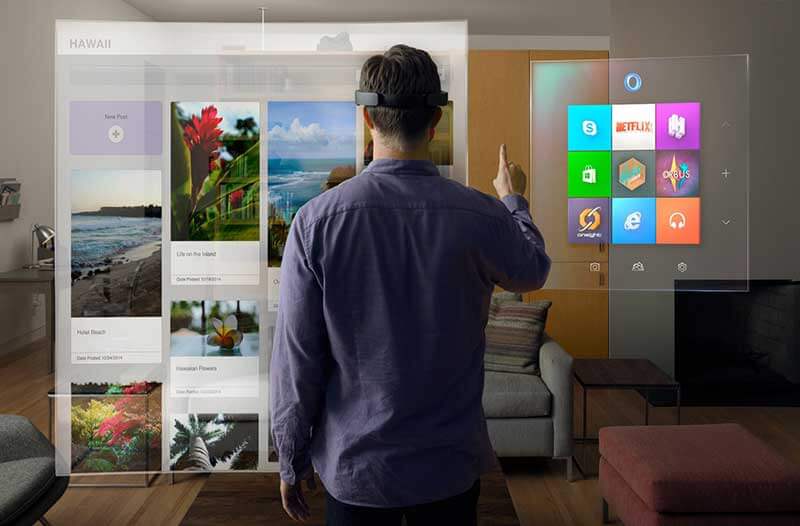
Trend 12: Drones are becoming indispensable across industries
Initially used as a military tool, drone tech has found applications in many other industries as well. Also referred to as unmanned aerial vehicles (UAVs), drones have become more sophisticated over the past few years, which is why companies are increasingly implementing this technology. Take the Japanese construction company Komatsu as an example. Earlier this year, they bought 1,000 drones from well-known drone manufacturer DJI, which they use to scan construction sites, identify materials, and map (potential) building areas. Another innovation in drone-tech is land mapping and surveying. DroneDeploy, for instance, wants to make this process a lot easier. It introduced Live Map, a mobile tool that generates real-time drone maps. What makes drones so appealing is that they can safely and efficiently reach disaster areas and help rescue teams to locate victims and deliver food and medical supplies.

Trend 13: Automating last-mile deliveries – new levels of efficiency and convenience
Today’s consumers are more empowered than ever before. They expect speed and convenience, especially when it comes to delivery. To meet these consumer demands, brands are coming up with new ways to improve their last-mile delivery. And what better way to make last-mile deliveries as efficient as possible than with autonomous vehicles? Renault is already experimenting with this tech. This car manufacturer developed an autonomous vehicle dubbed EZ-PRO to help reduce traffic congestion and pollution, which are common issues in last-mile deliveries. Autonomous vehicle startup Nuro is also working hard at improving last-mile deliveries with the development of autonomous electric vehicles that will deliver packages, groceries, and food to customers both in urban and suburban areas. Although some believe these innovations will make humans obsolete, the BBC reports that these developments will free humans up for more valuable work, such as remote operating tasks.

Trend 14: Can green tech help us save our planet?
Some of the biggest issues we’re facing today are pollution and climate change, and unfortunately, most of it is caused by our reckless behaviour. To help our planet and ensure we live more sustainable lives, many companies are working on innovative green technologies that can mitigate carbon emissions. For instance, Climeworks, a tech company from Switzerland, developed a technology that can “collect carbon dioxide (CO2) from ambient air and pair it with renewably made hydrogen (H2) to make methane fuel that would add little or no CO2 to the atmosphere”. This tech has been installed in Climeworks’ plant in Italy, which will be able to filter 150 tons of carbon dioxide from the air every year. Another initiative to reduce pollution comes from the University of Michigan, where a group of researchers is working on creating eco-friendly fuel made from algae. Besides being more efficient than standard fuel, this innovation could also reduce greenhouse gas emissions by 60 per cent. Indoor, urban and vertical farming will continue to gain popularity as well. These new farming techniques require far less water, land and pesticides than traditional farming. They also decrease the need for transportation as urban farms grow food closer to the consumer.
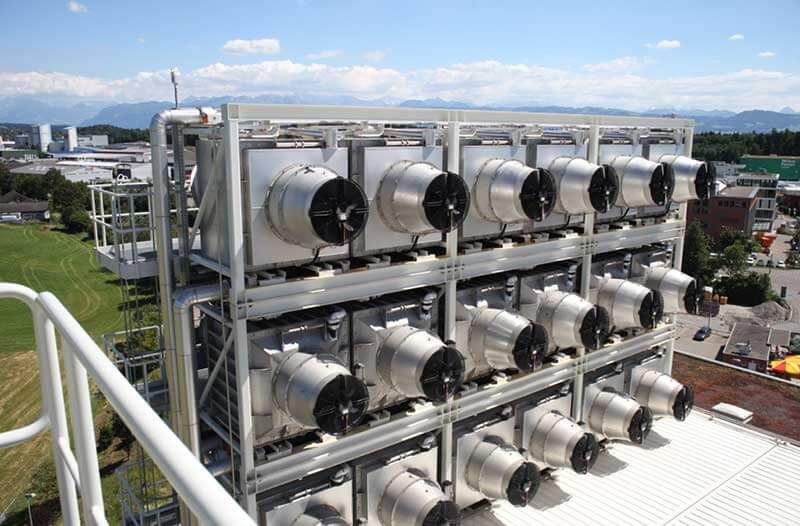
Trend 15: 3D printing is changing the manufacturing game
Additive manufacturing, also known as 3D printing, has been around for quite some time, but has only recently started showing its true potential. Today, both small- and large-scale companies are relying on 3D printers to create new products. Adidas, for instance, planned to release 100,000 pairs of shoes with 3D-printed midsoles by the end of this year, but it isn’t stopping there. In fact, the company hopes to produce millions of these shoes in the coming years. Boeing is also interested in 3D printing technology. It’s utilising this tech to produce air ducts and footrests. So far, around 60,000 3D-printed components have been installed in Boeing’s aircrafts. Researchers from the University of Minnesota are experimenting with 3D printing tech to create a soft and stretchy material that’s better than the traditional plastic used in 3D printing. This material could be used to manufacture items with unique shapes and capabilities.
Trend 16: The autonomous revolution in the cargo transport industry
Everything around us is becoming increasingly automated, and the same is true for the transport industry. Since autonomous technology is promising to make the industry more efficient, companies are more than happy to embrace it. An iron mining firm called Vale, for instance, is planning to replace its traditional truck fleet with autonomous vehicles by early 2019. If everything goes according to plan, Vale’s mine site in Brazil will be equipped with 13 driverless trucks. Each truck will be embedded with GPS, radar, and artificial intelligence. These new trucks are estimated to reduce fuel consumption by 10 per cent and improve safety on-site. But trucks aren’t the only vehicles becoming autonomous. The same is expected to happen with ships. For instance, the world’s first autonomous marine shipping company, named Massterly, has been established in Norway. To ship products, Massterly will rely on the autonomous container ship YARA Birkeland, which will start operating next year.
Trend 17: 5G will revolutionise wireless communication
We’re becoming increasingly dependent on wireless communication. But even though smartphones and other wirelesses tech are doing a good job in meeting our needs, they’re still not as fast and reliable as we’d like them to be. This could be easily solved with the fifth generation of wireless technology, also referred to as 5G. 5G tech brings numerous benefits. For instance, combined with sensor-tech, it could enable efficient communication between autonomous cars, helping to improve collision avoidance. And in case of serious traffic congestion, authorities could use 5G to send alerts to autonomous vehicles and reroute them. 5G could also change the way we use our mobile phones by enabling hologram phone calls and live interactive broadcasts. The UK telecommunications company Vodafone proved this is possible by conducting a live hologram phone call using 5G tech.
Trend 18: Cryptocurrency is the new medium of exchange
Ever since Bitcoin was introduced to the world almost a decade ago, cryptocurrencies have been making headway, and governments are determined to catch up with this technology. Although Russia didn’t seem to be very fond of cryptocurrencies at first, it clearly changed its mind, as it’s been reported that the Russian government is planning to develop its own cryptocurrency called cryptoruble. The new currency will be traceable and controlled only by the Russian government. Another country shares similar goals. The Marshall Islands is on a mission to release its own cryptocurrency, called SOV (Sovereign). SOV currency will be issued in partnership with the Israel-based tech company Neema. It will serve as a traditional currency and be used along with the US dollar. To prevent inflation, the country has already gathered 24 million SOV tokens, representing 24 municipalities within the Marshall Islands. Estonia, Iran, and China are also considering the development of their own cryptocurrencies.

Trend 19: Basic income as a solution to robots taking human jobs
Self-checkout machines making cashiers obsolete, robots replacing factory floor workers, and driverless trucks putting drivers out of work is by most accounts the future we’re heading towards. The consequences of the tech revolution aren’t just more efficient companies and new products, but also jobless people in dire need of some form of social safety net. One way to tackle these challenges is by introducing an universal basic income or UBI, a regular sum of money given by the state that enables citizens to meet their basic needs. Entrepreneurs such as Richard Branson and Elon Musk strongly support it, while the governments of Canada, Finland, and several other countries have already run pilot projects to get a better understanding of the pros and cons of the UBI. Italy has recently introduced a basic income for the poor, and more and more governments around the world are experimenting with this approach in a bid to address the effects of job automation.

Trend 20: Will the IoT finally make fully smart cities a reality?
The Internet of Things market will continue its impressive growth next year as well, and it’s expected to hit a value of $561.04 billion by 2022. This means that the current figure of 3.6 billion connected devices will most likely grow, contributing to further IoT market penetration. Industries such as manufacturing and healthcare are set to be especially strong growth factors as, for instance, the number of connected devices in manufacturing will double between 2017 and 2020. However, the IoT hasn’t yet delivered on its promise of creating fully smart cities, though projects such as Sidewalk Labs in Toronto are a hopeful sign that we can at least expect smart neighbourhoods. Our cars are also increasingly equipped with a number of IoT devices that monitor oil levels, tyre pressure, fuel consumption, and many other parameters. And for the IoT to really take off and thrive, more robust cyber-security solutions are needed to protect IoT devices against malicious attacks.

Trend 21: AI and 3D imaging help online merchants increase sales
E-commerce companies rely on technology to impress customers in an increasingly competitive online shopping market. One way to do this is by offering 3D product imaging and enabling people to zoom, rotate, and observe products from various angles. E-commerce businesses that have implemented this solution, such as TSUM, report a 40 per cent increase in their conversion rate. Meanwhile, online fashion retailers such as Yoox have developed AI tools that analyse social media content, customer feedback, online magazines, and the company’s own sales data to recommend potentially popular and lucrative clothing designs. The Indian e-commerce site Myntra took a similar approach, witnessing the sales of shirts with AI-generated designs “growing at 100 per cent”, the company’s CEO, Ananth Narayanan, says. AI is also set to play a crucial role in other segments of e-commerce. For instance, chatbots are already an important element of customer service, while AI-powered analytics and ad-delivery systems will enable companies to reach and engage customers more efficiently than ever before.

Trend 22: The wearables market will expand way beyond the health and fitness sector
Worldwide sales of wearables are growing at an average annual rate of 20 per cent, and this market will be worth $29 billion by 2022. Brands such as Apple, Fitbit, Jawbone, and Xiaomi are some of the key players in this sector, with fitness trackers and smartwatches continuing to be the most popular wearable devices. Wearable tech is also gaining traction in the construction industry. Cooling vests, smart safety hats, and Microsoft HoloLens, for instance, are in high demand, helping construction workers be safer and more productive. Also, manual labour may no longer be as exhausting as before, once LG’s CLOi SuitBot exoskeleton hits the market to help workers lift heavy items. Even life insurance companies such as John Hancock have found a use for wearables. They increasingly rely on the health and fitness data generated by these devices to determine insurance premiums. Customers that regularly exercise and eat healthily, for example, could be rewarded with lower premiums, gift cards, and other benefits.

Trend 23: Digital twins reveal insights about their physical counterparts
By creating a digital twin of a physical object and dynamically modifying it using real-time data collected by IoT sensors, engineers are now able to better track and analyse the performance of a number of objects, such as cars, buildings, or even jet engines. Digital twin technology is, therefore, an important tool for engineers to find ways to improve products and test a range of what-if scenarios. The potential of this tech is even recognised by NASA and the US Air Force as they plan to use it to create a new generation of vehicles. Leading global investment banking, securities and investment management firm Goldman Sachs also acknowledged the value of digital twin tech by including it in its series “The Outsiders” as a trend that’s “on the edge of today’s investable universe”. Gartner predicts that by 2021 “half of large industrial companies will use digital twins, resulting in those organizations gaining a 10% improvement in effectiveness”.
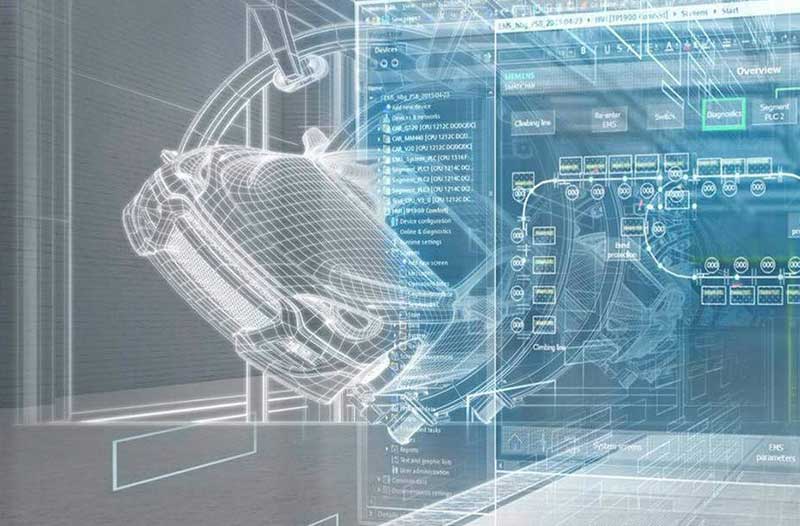
Trend 24: Organisations are increasingly turning to tech to protect the environment
Efforts to reduce pollution aren’t happening fast enough, and we’re unlikely to keep the global temperature rise below 2 degrees Celsius as proposed by the Paris Agreement. This has prompted many organisations to turn to tech for potential solutions. The Environmental Defense Fund, an NGO, is planning to launch a satellite to measure levels of methane released into the atmosphere by the oil and gas industry, which is one of the leading human-made emission sources of this greenhouse gas. The gathered data will then be used to shape “emission reduction strategies”. Google Maps Street View cars will soon be equipped with Aclima’s air quality sensors that’ll measure and map carbon dioxide, carbon monoxide, and nitrogen dioxide in selected cities. Companies such as the Iceland-based Carbon Recycling International (CRI) have even found a way to turn carbon dioxide into methanol, which is then sold on the European fuel market, and Volkswagen plans to spend over €40 billion on electrification and e-mobility. These projects paint a picture of the global economy turning to environmental tech to protect the planet, and this trend is expected to grow way beyond 2019.
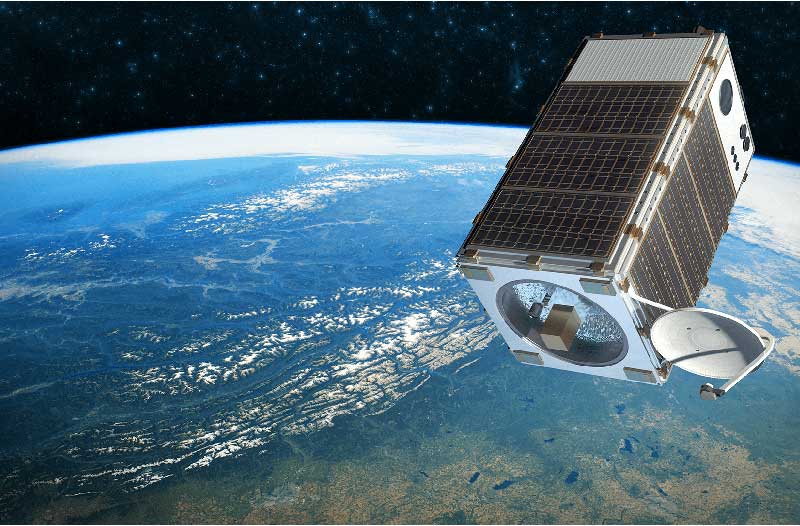
Trend 25: Robots will be taking over the market
Next year is expected to be a great year for commercial robots, with some companies scaling up their production and others already making significant research breakthroughs. Boston Dynamics, a robotics company owned by the tech corporation SoftBank, is planning to produce around 1,000 four-legged SpotMini robots next year. These machines could potentially be used in elderly care, delivery efforts and a number of tasks in construction and security. Agility Robotics raised $8 million in funding to continue the development of its bipedal robot Cassie. This robot could, among other things, potentially help people with paraplegia. Researchers at the University of California, Berkeley, and Carnegie Mellon University developed a bipedal robot that navigates “over unstructured and uneven terrain”. This capability makes these machines “ideal candidates for applications such as space exploration, [and] disaster response”. As scientists continue to innovate, we expect these and similar robots to find applications in a growing number of sectors.
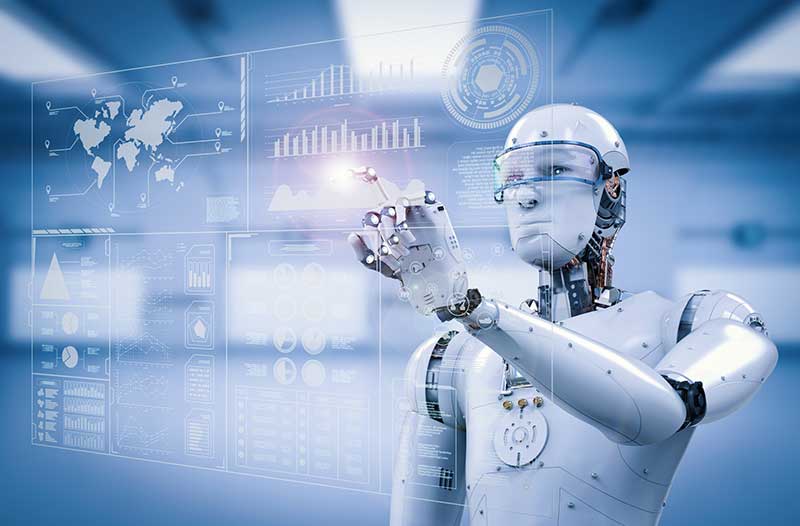
Being tech-vigilant is becoming a prerequisite
The rapid rate of technological development has triggered a proliferation of disruptive technologies that are making profound changes in society and across industries. However, identifying those with the most potential is challenging, given the speed at which they evolve. That’s why observing, evaluating, and recognising the potential behind emerging tech trends is necessary to initiate and direct digital transformation. Being tech-vigilant is not an option – it’s become a prerequisite for upgrading governments, organisations, and businesses to a whole new level.



